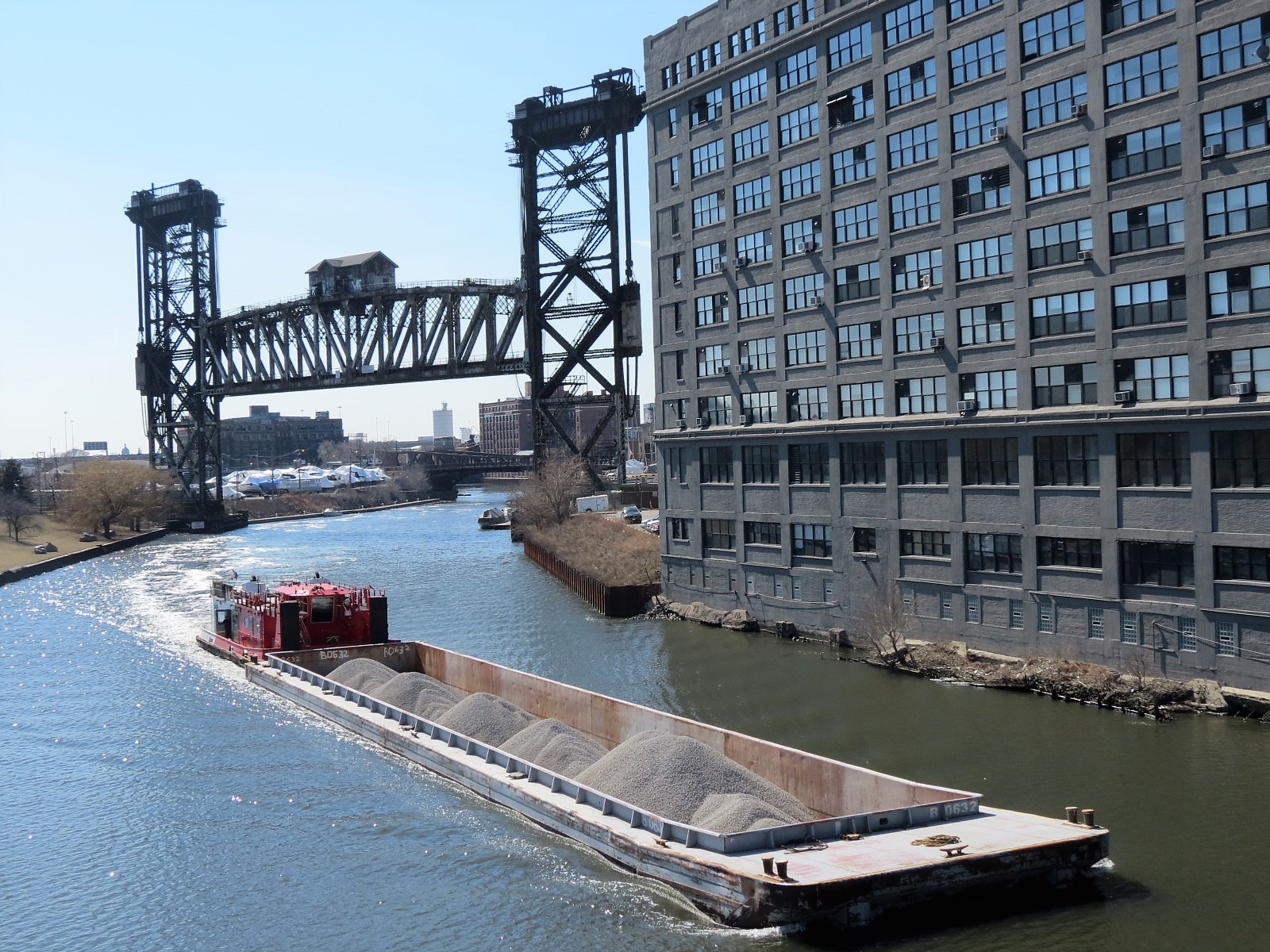Bridge 458 from the 18th Street bridge
Over 60 movable bridges keep Chicago’s waterways navigable and its reputation as a watery crossroads intact.
Movablilty is relative, of course. The bridges on the North Branch for example are no longer raised. As you move farther south they become progressively busier. The Loop bridges open twice weekly in the Spring and Fall (Chicagoloopbridges.com) On the Sanitation and Shipping Canal the Ashland Bridge is the last bridge west to still function. The bridges in the far south Calumet area raise and lower as needed daily.
Movable bridge basics.
1. A Chicago bridge will be one of three types: bascule (single leaf or double leaf), vertical lift , or swing.
2. The bascule can be: fixed trunnion (axel) with hidden counter weights, heel trunnion with visible counterweights, or rolling.
3. Finally, there are also three basic truss styles: pony truss, through truss, and deck truss.
The majority of Chicago’s bridges are pony truss double leaf fixed trunnion bascules.
For those who want even more basics check out this page from Bridges & Tunnels of Allegheny County.
Marker information
Listed on each marker is the date of construction, truss style, bridge type, and a link to historical/engineering details from the highly informative HistoricBridges.org. For details on specific bridges of all types in your area HistoricBridges.org is a good place to start.
Highlights:
The Cortland Bridge, Cermak to 18th Street grouping, and the Ewing Avenue/95th Street grouping near the mouth of the Calumet River.
Find this map with other points of interest on The Map or contact me for a guided bike tour that includes these locations.
Sources: Chicago’s Bridges / Nathan Holth, HistoricBridges.org, icons from Nicolas Mollet’s Maps Icon Collection, Bridge Links / Y_tambe, Truss links / Roland Bergmann Dipl. Ing

